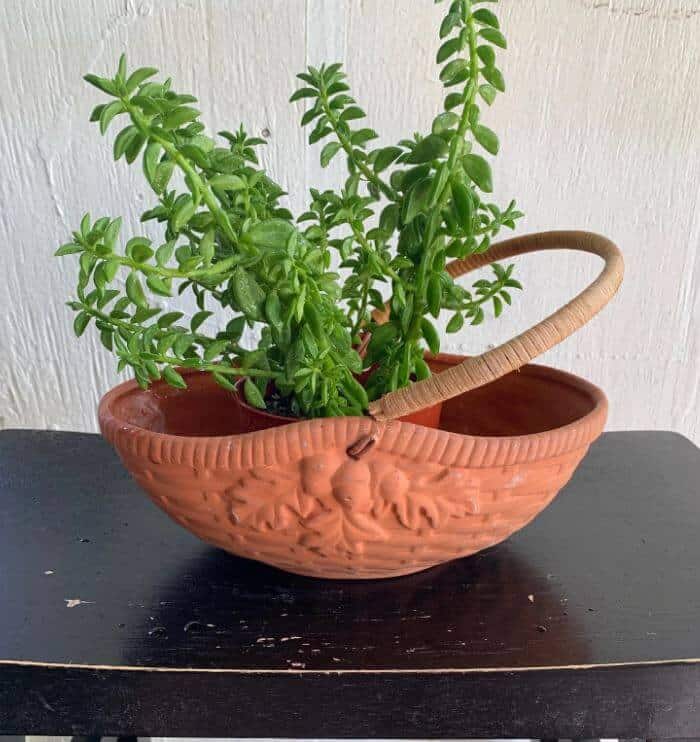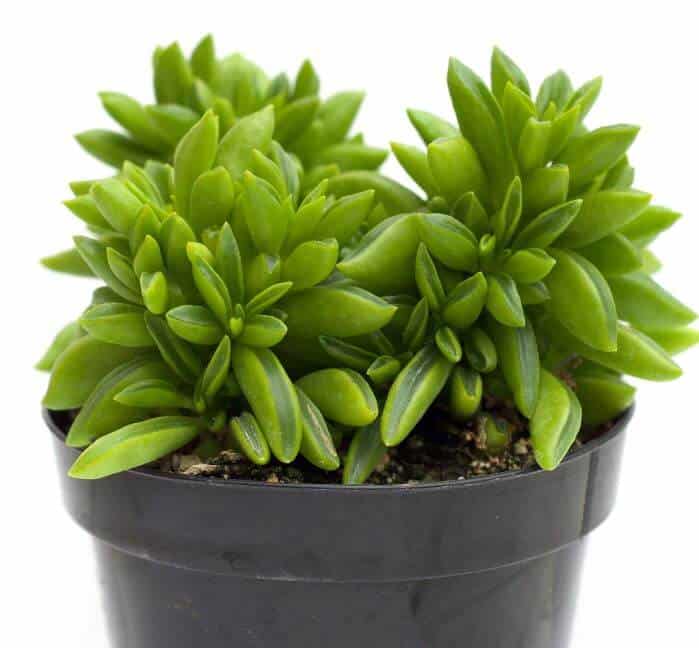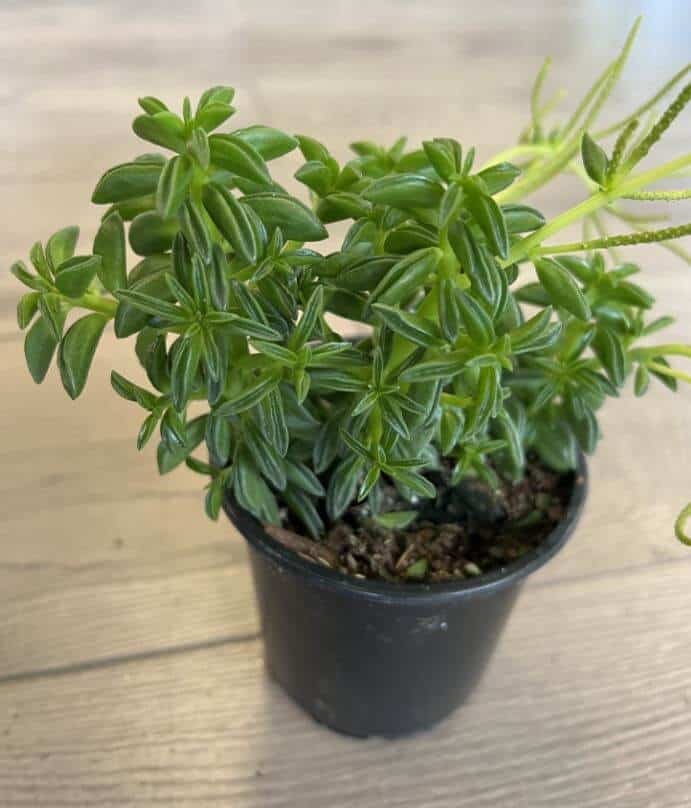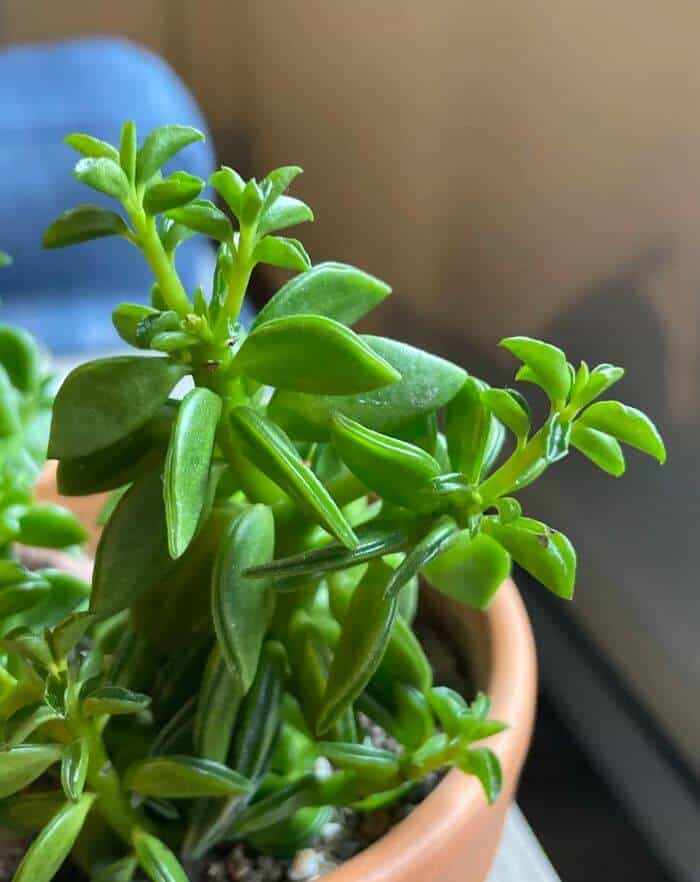Last Updated on January 6, 2023 by a Friendly Gardener
The Peperomia taco plant, or Peperomia axillaris, is an interesting-looking plant whose leaves are folded inward, making each leaf resemble a taco. There are some leaves that might open up a bit more, although this is quite a rare phenomenon.
With glossy, dark green, and sometimes fuzzy leaves, this plant can provide an eye-catching presence in your home provided that you maintain some necessary conditions around the plant.
Native to several rainforests in different parts of South America, this plant has now spread worldwide due to its usage as a houseplant. This can let you grow the plant yourself too. There’s a lot to know about this, so let’s get started!
Peperomia Taco Plant Propagation

You can easily figure out a way to propagate the taco plant on your own. Note that obtaining seeds might be out of the question here since they are not that convenient to find or buy.
More than this, however, the seed method requires a lot more effort, although if you do wish to try it, you certainly can by starting the seeds indoors a month or two before spring begins and then transferring the seedlings to some potting soil.
More hassle-free than this is making use of stem cuttings or leaf cuttings. For the former, remove most of the leaves, and for the latter, retain only the leaf and a tiny part of the stem of a mature plant.
You can then undertake the following common steps for either method.
- Apply some rooting hormone to the stem or leaf cutting. Do not cover it entirely; simply sticking to the tip is enough.
- You can then allow the roots to develop a bit either by using a plastic bag or some water in the case of stem cutting.
- You can also skip the previous step and plant the stem or leaf cutting in the soil in the pot.
- Give the plant enough time to develop the roots so that it can continue its growth later.
- Gradually expose the plant to more and more sunlight so that you do not burn the plant from the very beginning.
- Water and fertilize the plant based on the routine you follow and on how your plant is growing. You can figure out more about this in the following part of the post.
Peperomia Taco Plant Care

The Peperomia taco plant has pretty standard necessities when it comes to its growth. There are only a few elements of its care that you might have to pay particular attention to.
Here are some more details about this that you can stick to and tweak as required.
Light and Temperature
This plant can grow well if you provide it with bright natural light, although growing lights can work too. Ensuring that the sunlight does not directly scorch the plant is important so that the plant can grow freely.
You should also attempt to regulate the temperature around the plant, which can be easier if you place the plant indoors. Temperatures between 65℉ and 75℉ can be ideal.
Watering
This plant does well with constant and consistent levels of watering. In fact, you should always try to keep the soil of this plant moist, so if you notice the top becoming dry, it might be time for some hydration.
At the same time, do not overwater the plant as this could increase the risk of fungi and rots.
Humidity
Humidity is a friend of the taco plant, so if the air in your room or even the atmosphere outdoors has high levels of humidity, this is bound to be good for your plant’s growth.
If there is a prolonged lack of humidity around the plant, you should seek to increase it using a water tray filled with pebbles. You can also lightly mist the leaves.
Soil
The soil of your taco plant should be full of nutrients. You can use ordinary potting mix or soil for this plant, but you should find some twigs, leaves, compost, peat, sand, perlite, moss, and bark that you can mix in with the potting soil.
These can go a long way in freeing up some of the compactness of the soil so that it can become well-draining.
Fertilizing

If you mix the aforementioned elements into your soil, these should enrich the soil considerably, thus minimizing the need for fertilizer. Even then, however, if you add a mild fertilizer to the soil once or twice in the growing season, this should enhance the growth process and rate.
You should provide this monthly if the soil is devoid of nutrients.
Pruning
Older leaves might sometimes brown and wither, requiring you to prune them from the plant. Apart from this, the plant does not usually become too awry, but if you want to limit its growth, pruning can help.
You can also prune some of the plant’s roots if some of them seem to be damaged. You should only do this before repotting the plant.
Repotting

Once the plant manages to reach a size that is no longer suitable and stable enough for the container to manage, you will need to repot the plant to a larger and wider pot where the roots can grow freely again. Use some fresh soil but provide a bit of the older soil too to prevent shock.
Flowering
The flowers of this plant can bloom in the growing season. They are minuscule and yellow and can wilt and die on their own in a couple of weeks. If you want to remove them, you can do this with some clean scissors or shears so that the plant can focus its resources on the leaves.
The Bottom Line
The Peperomia taco plant has taco-shaped leaves that can make this plant distinctive and eccentric to look at. It can add some freshness to your home and can also be simple in its maintenance and care once you figure out what works for it well.
As similar as they look to tacos, make sure you keep your kids and pets away from nibbling on them.

